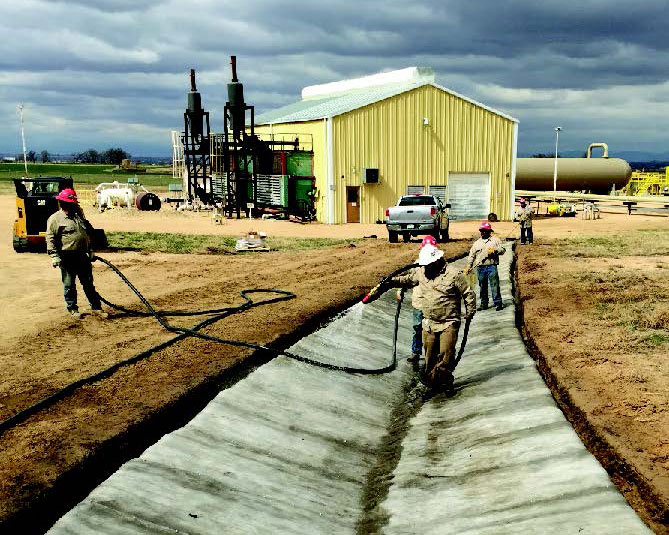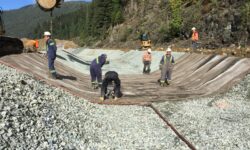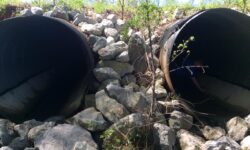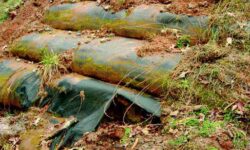Project Overview
The facility is located in extremely difficult dry, windy climate where vegetation is hard and expensive to maintain. However when precipitation does occur, runoff water must be managed correctly otherwise significant erosion and water quality issues can occur. The facility has been experiencing erosion in their drainage areas and wanted to correct the problem in the most economical way with the minimum disturbance to the facility or its daily operation. In addition, the client desired to maintain compliance with city, county, and state stormwater quality regulations.
Solution
The options included vegetation, riprap, poured concrete and Combat Concrete GCCM. The vegetation option was eliminated based on soil conditions, regional climate and minimizing potential grass fires from occurring. Riprap was evaluated and eliminated based on the requirements of additional excavation depth that might have caused issues with subsurface infrastructure conveyance systems, removal of soils off the site, time for installation and the long term maintenance. Poured concrete was evaluated but did not provide the flexibility for alteration for potential future infrastructure installation and access to below grade conveyance systems for maintenance or repairs. Combat Concrete (CC) GCCM was selected based on minimum disturbance to existing operations, flexibility for future infrastructure installation, easy access to underground conveyance system and the overall installation cost and long term maintenance operation cost, as well as, the time to install the system.
The drainage channel was slightly regraded to develop the desired channel cross section (a v-ditch 10 ft wide and approximately 2 feet deep) and positive gradient flow to meet their storm water management requirements. An anchor trench was installed around the top perimeter of the drainage channel to secure the CC into. CC was then deployed perpendicular to the flow and terminated into the anchor trenches. Metal stacks with washers were used to secure CC into the trench. Relief cuts were made into the CC for culvert pipe penetrations so that the CC could be wrapped around the culvert and secured to the pipe with screws. After all of the CC was installed, CC was hydrated. The entire drainage channel was 2,000 sq.ft. and installed within 4 hours.
Results
The contractor, engineering firm and owner were very pleased with how flexible and forgiving the CC installation was compared to prior methods that have been utilized. All parties agreed that CC will become one of their standard practices.




